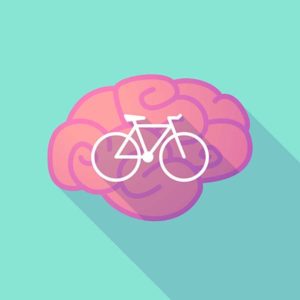Science Explains How Cycling Changes Your Brain And Makes You Mentally Stronger
 Research has shown that incorporating cycling into your daily routine is not only healthy for your body, but also your brain! If you have ever cycled to work and noticed that your mood and mental capabilities felt better than normal, you were actually experiencing the proven benefits of cycling on mental health.
Research has shown that incorporating cycling into your daily routine is not only healthy for your body, but also your brain! If you have ever cycled to work and noticed that your mood and mental capabilities felt better than normal, you were actually experiencing the proven benefits of cycling on mental health.
Many people have taken up cycling as a way to get in shape and live a healthier lifestyle; however, even those who already enjoy good physical health can improve their mental strength through cycling regularly. A mere 30 minutes of steady cycling on the road, trail, or stationary bike can improve memory, reasoning, and planning. It also has scientifically proven benefits for emotional mental health, helping combat depression and anxiety.
Your Brain on Biking
Cycling can grow your brain in the same way it can grow your muscles. When we cycle, the blood that flows to the muscles increases, allowing our bodies to build more capillaries, supplying more blood (and therefore more oxygen) to those muscles. The same process actually occurs in our brains. Cycling allows our cardiovascular system to grow further into our brains, bringing them more oxygen and nutrients that can improve its performance.
When we ride our bikes, our brains also increase their production of proteins used for creating new brain cells. By biking regularly, we actually double (or even triple) new cell production in our brains! It also increases neurotransmitter activity, allowing the regions of our brain to communicate more effectively; therefore, improving our cognitive abilities.
The benefits of cycling are especially important for aging brains. These processes counteract the natural decline of brain function and development as we age. Scientists have compared the brains of adults in their 60’s and 70’s and found that the brains of those who regularly participated in physical activities like cycling actually appeared younger than those who do not. This proves that cycling can help keep our minds sharp well into our later years.
Cycling Shifts Our Mental Well-being
People of all ages can experience the benefits of cycling on psychological well-being regardless of their physical health. It can improve one’s self-perception and sense of self-worth, resulting in higher self-esteem. Studies have shown that these improvements were even stronger for mental health patients and people suffering from mild depression, and can potentially be just as effective (if not more effective) than psychotherapy. Regular activities such as cycling not only combat mental health issues like these, but they can also help prevent them long-term.
Cycling also improves our subjective mood, reduces anxiety, and allows us to handle stress more effectively. It increases the levels of serotonin and dopamine production in our brains. These are the chemicals that make us feel ‘happy’ when they are released in our brains. Scientists have confirmed this effect by analyzing serotonin levels in the brains of lab rats as they got more exercise. Serotonin and dopamine are not the only feel-good chemicals produced when we cycle. Our bodies also produce endorphins and cannabinoids (yes, cannabinoids, the same chemical family associated with marijuana use, although these are naturally produced by our bodies regularly!).
When we cycle, our bodies improve their ability to regulate hormones like cortisol and adrenaline. This results in an improved ability to handle stress. Hormonal imbalances cause our bodies to respond to stress negatively, so it is important to have a routine like cycling to allow our bodies to handle stress more easily.
Doctor’s Orders for Cyclists
How much should we cycle to take full advantage of the benefits it can provide? It is true that cycling with too much intensity can begin to reduce our energy as our bodies become depleted of nutrients. That said, how much cycling is enough to enjoy its benefits before it begins to take too much of a toll on us? Scientists suggest that 30-60 minutes of steady riding at a good pace (no sprinting!) is a good balance. Maintaining a heart rate at roughly 75% of our maximum is also suggested. Think of it as a 7 out of 10 on a scale of ‘no activity’ to ‘cycled so hard I can barely breathe’. This is a general guideline for the average person, so ultimately it is important to cycle to fit one’s ability.
Thanks Joycelyn Jones for your Wisdom






Leave A Comment